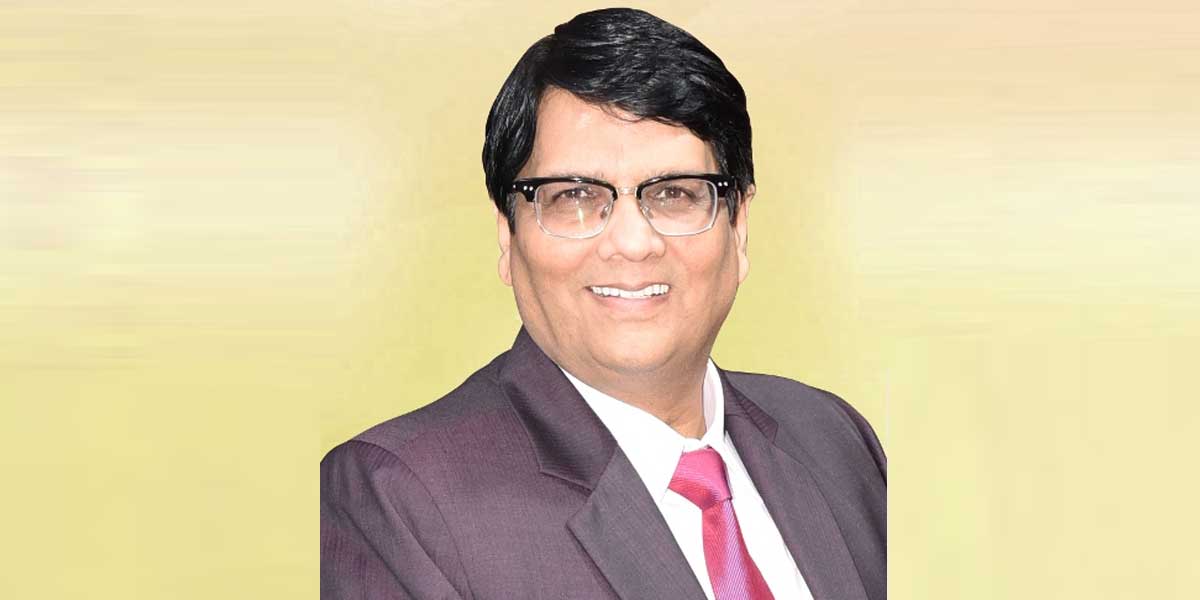

Infrastructure is part of our daily life, be it transport helping us in our commute between places, energy systems to power our homes and businesses, water infra to provide us clean drinking water, sanitation networks to keep the city clean and healthy, and digital networks allowing us to communicate.
The infrastructure sector was one of the major focus areas in the FY2019 budget and saw announcement of massive spending on roads, railways, water, irrigation, and urban infrastructure. The Finance Minister has announced that the government will spend Rs.100 trillion on infrastructure upgradation over the next five years, a critical step towards the aspiration of making India a $5 trillion economy. An expert committee is being set up to recommend the structure and flow of funds through the development of finance institutions.
As the government started strongly on its second stint at the Centre, we expect that a number of large infrastructure projects will be initiated apart from the thrust that has been given to the existing and currently under execution projects like Smart City Mission, AMRUT watersupply and irrigation, roads and highways, metro-rail, Sagarmala and Bharatmala schemes, Swachh Bharat Mission, National Mission for Clean Ganga, and river development and interlinking. The power sector schemes like Deendayal Upadhyaya Gram JyotiYojana (DDUGJY), Ujwal Discom Assurance Yojna (UDAY), Integrated Power Development Scheme (IPDS), Unnat Jyoti by Affordable Lighting for All (UJALA), Sahaj Bijli Har Ghar Yojana (Saubhagya) towards the development of power transmission, distribution and rural electrification, will continue to be in execution for powering the nation.
Growth 2.0
In an effort to ensure India’s
water security and providing
access to safe and adequate
drinking water to all Indians,
the government envisages toprovide water supply to every
household by 2024 under the
flagship scheme of "Jal Jeevan
Mission". An estimated RS.6.3 trillion
investment is needed in the next
five years to achieve the massive
task of connecting about
140 million rural and urban
households with piped water
supply. The Jal Jeevan Mission
will converge with other Central
and state-government schemes
to achieve its objectives of
sustainable water supply
management across the country.
Giving it priority, the Prime
Minister appealed to all states to
generate maximum community
participation in the form of
"Jan Andolan" to achieve the
target of functional household tap
connection by 2024.
The recent announcement to speed up the implementation of projects under the Smart City Mission with a new target of Rs.2 trillion would involve completely turning around the mission to award works worth Rs.2 trillion on the ground till 2022. Under the Smart Cities Mission, more than 5,000 projects worth over Rs.2.05 trillion are at various stages of implementation. Currently, over 3,500 projects worth Rs.1.35 trillion have been tendered, over 2,800 projects worth Rs.900 billion have been grounded for construction and over 900 projects worth Rs.150 billion have already been completed.
It is projected that India will become the third largest construction market globally by 2022 and there will be an investment requirement worth `50 trillion in infrastructure. Sectors such as water supply and irrigation, power, roads, metro rail, and renewable energy will drive the investments in the coming years.
Traditionally, the government has been the sole financier of infrastructure projects for implementation, operations and maintenance. But a paradigm shift is visible to finance and execute mega projects and the government is making efforts to create an environment for sustainable and scalable involvement of the private players. Several new business models of project financing are being experimented with more proactive participation from the private sector in the form of hybrid annuity, PPP and other formats.
Infrastructure challenges
The government has also
initiated a number of measures
to increase the speed of
construction. Going ahead, the
sector is poised to rebound with
new opportunities. But growth
of the infrastructure sector is
dependent on solving some
key challenges that need to be
addressed including investment
gaps, funding issues, land
acquisition and environmental
clearance, lack of coordination
between various government
agencies, inappropriate structuring of projects, lack
of proper dispute resolution
mechanism, payment and
execution delays, old methods of
construction and lack of adoption
of innovative technologies, etc. It
is also possible that projects may
fail or may be terminated prior
to the project term for a number
of reasons including change in
government policy, failure by
the developer or the government
to perform their obligations
or indeed due to other
external circumstances.
SPML connect
From its inception in 1981,
SPML has executed no less than
600 infrastructural projects, in
areas ranging from drinking water
facilities, wastewater treatment,
sewerage network and better
municipal waste management to
smart cities, renewable energy
and power transmission and
distribution. These achievements
speak amply about the
ISO 9001-2015 certified
company’s dedication to
improving lives of millions
of Indians.
In the area of sustainable water management, it is currently engaged in Phase-III of the Saurashtra-Narmada Avtaran Irrigation Project (SAUNI Yojana), the ambitious large water supply and irrigation project envisages to provide drinking water facilities to around 39 million people across 132 towns and 11,456 villages and to irrigate 1.8 million hectare of land in Saurashtra, Kutch and north Gujarat benefiting millions of farmers. SPML Infra has earlier completed the Phase-I and Phase-II of this project.
The company is also working on urban water supply projects, including one aimed at improvingSPML Infra has constructed a number of sewage treatment plants (STP) including 240 MLD STP in Ahmadabad, 72 MLD STP in Delhi, 70 MLD STP in Nasik, and 115 MLD decentralised STPs and pumping stations as one of India